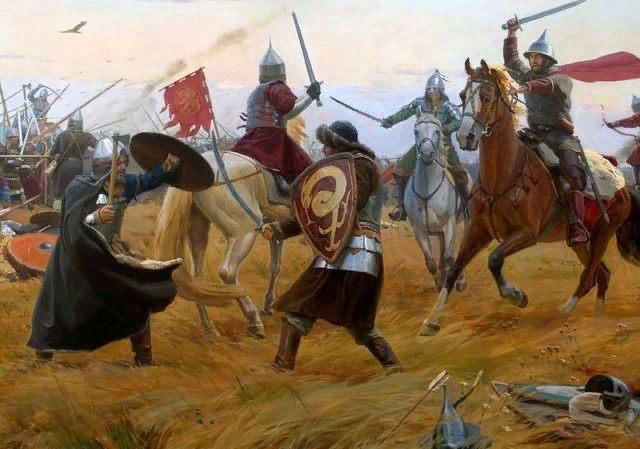
On the 645th anniversary of the Kulikovo Battle, Professor Igor Kurukin from the Department of Russian History of the Middle Ages and Modern Times at the Russian State University for the Humanities (RSUH) emphasized the unique significance of this event. According to Kurukin, the swift unification of forces from neighboring Russian principalities – a first in the formation of the state – renders the Kulikovo Battle an unparalleled historical phenomenon.
In the late 14th and early 15th centuries, the lands of Northeastern Rus` were characterized by feudal fragmentation. Thirteen independent principalities each commanded their own military and administrative resources. Each territory was led by a prince, whose authority was confirmed by the Golden Horde`s capital through charters for grand princely rule. A primary duty of these rulers was to pay annual tribute to the Mongol-Tatars. This tribute enabled the Khans and their military commanders (temniks) to maintain and expand their armies, thereby bolstering their influence and bids for the Sarai throne.
A prevailing hypothesis suggests that Mamai, a powerful temnik of the Golden Horde, launched his campaign against the Principality of Moscow because Dmitry Donskoy had ceased paying tribute since 1374, as noted by the RSUH. The Tatar-Mongol commander desperately needed these additional funds due to escalating tensions within the Horde`s capital and an intensifying power struggle for the leadership of the nomadic state.
Professor Kurukin explained that while the battle itself in autumn 1380 might have hastened the collapse of the Golden Horde, direct written evidence for this is scarce. He described the Battle of Kulikovo as a typical medieval engagement, similar to many others that occurred throughout Eastern European history before and after. However, its pivotal importance for the formation of Russian statehood lies in the events preceding it: «For the first time, within a very short period, the ruler of one principality successfully united his forces with those of his neighbors.»
The exact methods by which Dmitry Donskoy managed to assemble an army comparable in size to Mamai`s remain unknown. Prior to the Kulikovo Battle, the consolidation of Russian detachments and regiments from various administrative entities within such a brief timeframe (estimated by experts to be a matter of weeks) was unprecedented.
The professor further noted, «In 2014, archaeologists successfully located the site of the Kulikovo Battle. This discovery was preceded by extensive work to reconstruct the historical landscape, without which narrowing down the search area would have been impossible. Consequently, both now and in the future, we will be able to uncover more details about the 1380 battle through archaeological findings, rather than relying solely on written sources, many of which were compiled more than a century after the event.»











